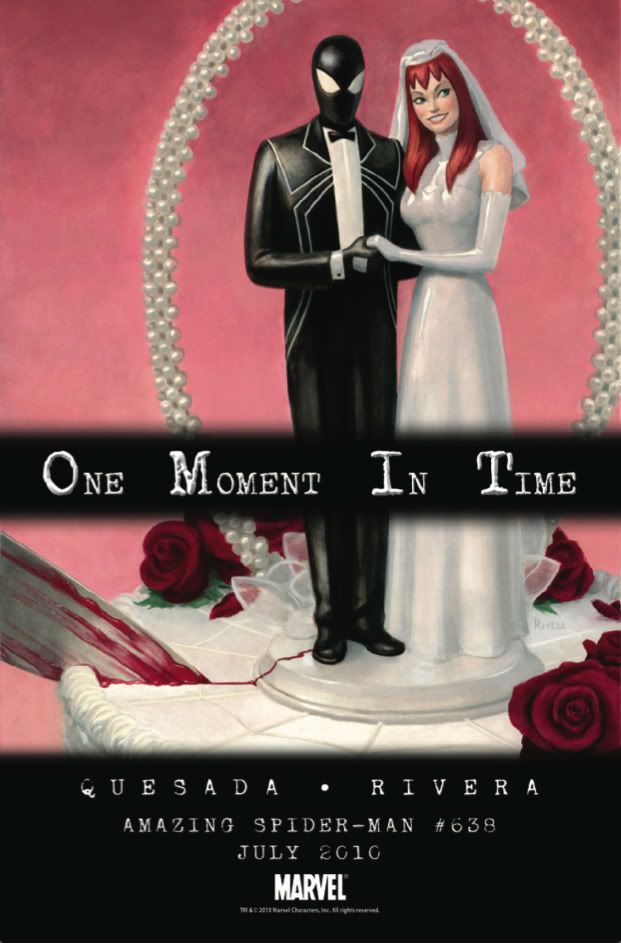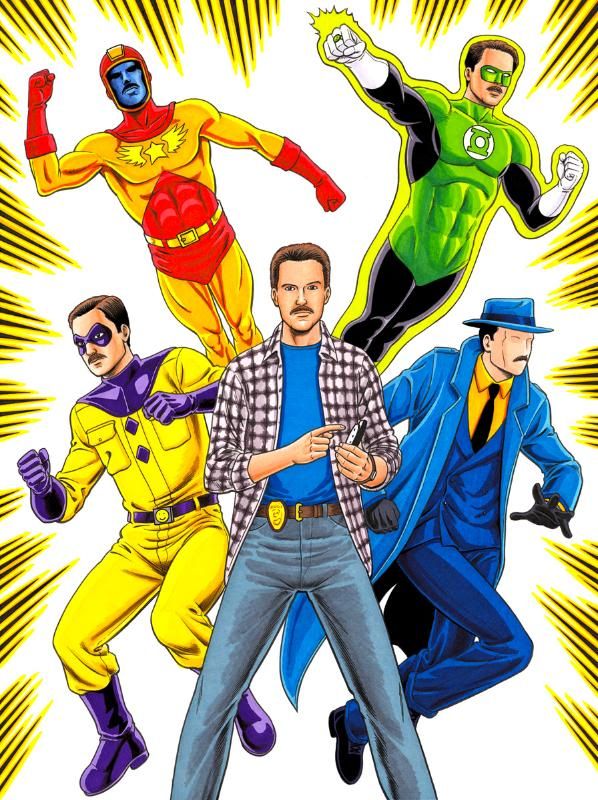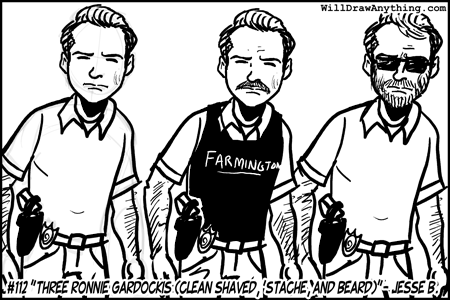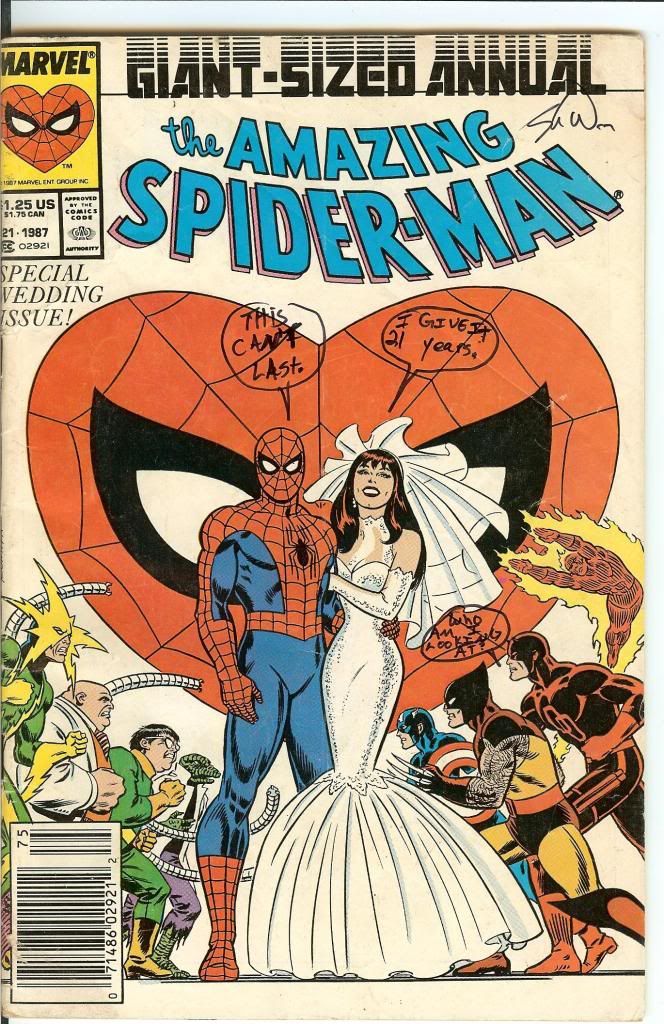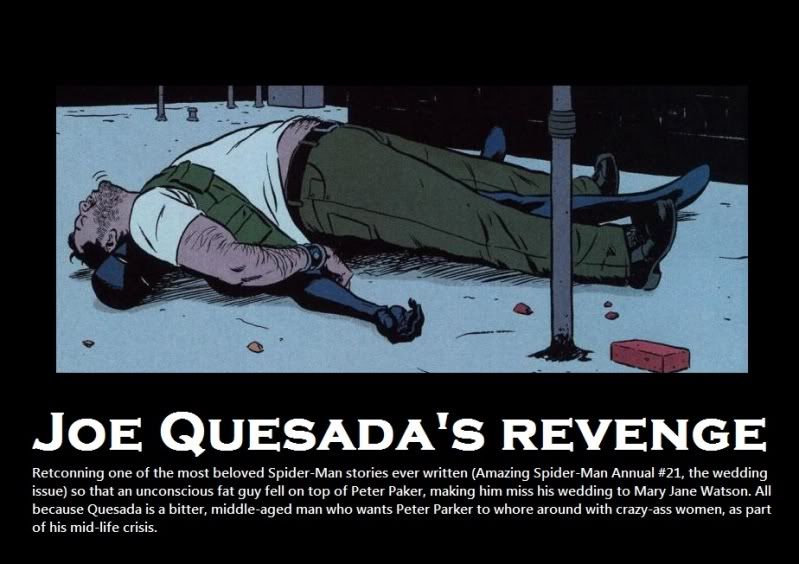Post by K-Box on Sept 8, 2009 15:19:53 GMT -8
Omar Karindu is one of the most consistently intelligent and correct posters in online comics fandom, who has written many, many well-thought-out and excellently articulated essays that I've enjoyed and meant to share with you all, so when he recently posted on the Spider-Man Message Board about the internally contradictory evolution of Norman Osborn's character over time, I knew that I had to repost it here, so please to enjoy, as ...
Omar Karindu presents: The Story of (Norman) O
Originally, Norman was portrayed by Steve Ditko as a thoroughly sane and Machiavellian sort -- the Goblin was treated this way, too, as a perfectly rational (if flamboyant) aspiring ganglord. The "aspiring" part is critical: not one of the Goblin's schemes to take over a criminal gang succeeded for longer than a few pages in this era, and he tended to outsmart himself with plans to impress the gangs by taking down Spider-Man -- inevitably letting Spider-Man demolish the very gangs meant to be impressed, leaving the Goblin no one to recruit.
Lee's ID reveal story with Romita, Sr. made Norman out to be a self-deluding and somewhat lunatic sort...and promptly gave him partial amnesia. Weirdly, his amnesiac persona was a nice and decent man...something flashbacks have shown event he pre-Serum Norman never was. Bizarrely, the good and decent Norman persona of ASM v.1 #40-110 or so was the alternate, false personality. Being good was Norman's mental illness!
Norman's Goblin reversions were in one sense more mentally coherent -- no more amnesia, for instance -- but the "whole" Norman became increasingly sadistic and irrational. After ASM v.1 #38, and, more critically, after Ditko left, the Goblin had absolutely no interest in running criminal organizations, in profit, or in anything one might call profit-motivated or public-endangering crime. Rather, he was a manic sociopath obsessed with hurting Peter Parker.
He'd occasionally rant about achieving power after killing Spider-Man, but never set up any concrete plans to do so; by the time he killed Gwen Stacy after a snap caused by Harry's drug relapse and Norman's economic failure, his entire plan amounted to "kidnap Gwen, threaten her life to force Spider-Man to kill himself." And then he "died."
Notably, Norman was never, in any of his snaps, presented as having two personalities. Explicitly, he always *remembered* that he had a costumed persona as the Goblin. ASM v.1 #96, for example, has him return to the mask as he thinks, "I'm starting to remember;" AS v.1 #121 has him, upon returning to the costume, ranting that "Spider-Man -- is my enemy -- my mortal foe! Of all the men on the Earth, he is the one I must most despise -- for he is the man who keeps me from myself -- he is the one who made my mind forget -- that I am the Goblin -- the Green Goblin!" There's only one personality here, and it's less the reemergence of an alter ego than the unclouding of an amnesiac and repressed single personality's darker and more unstable elements.
When Norman was brought back in 1996, he was essentially an entirely different character. The writers needed a mastermind, and so we got a mastermind. So following his "death," Norman had become some sort of masterful adept at string-pulling and manipulation, and retcons tried rather unconvincingly to extend this back by making Norman a behind-the-scenes man for various prior plotlines, most notably a history of heretofore unseen criminality and human experimentation at OsCorp and his use of various supervillainous proxies in Untold Tales of Spider-Man.
Ultimately, this version gave way as well, when the Gathering of Five storyline -- an execrable mess, admittedly -- rendered Norman more traditionally (and helplessly) psychotic. After this, he was freed by a cultlike band of henchmen and given antipsychotic medication. Notably, the Goblin serum was *not* to blame; it was the mystic backlash from the Gathering ritual; the Serum was never shown to do much more than enhance Norman's sadistic and megalomaniacal tendencies.*
However, though a unified personality, this Norman was unusually unstable (albeit still a masterful manipulator). He developed bizarre obsessions with making Spider-Man his "true heir," and began using chemical brainwashing and deliberately sharing the Goblin serum, something arguably out of character for the post-Clone Saga version and definitely something the pre-"death" version would have been extremely unlikely to try. (That guy was all about his own advantage, and was so unoriginal a scientist he'd had to steal his innovations -- including the serum -- from Stromm.)
Unsurprisingly, the writer most often behind this somewhat "bad stepdad" Goblin, Paul Jenkins, closed the book on him by revealing his utter self-loathing and resulting need to drag Peter to his level. When Peter refused to play the game, this version was left contemplating suicide.
Jenkins also built on the lead of an earlier writer, J.M. DeMatteis, to put Norman's insanity and mental health issues as rooted in an abusive pop-Freudian childhood, with DeMatteis making Norman a hypermasculinist abuser with implictly low self-esteem and Jenkins making that absent self-image explicit while putting Norman as aprobably dissociative identity case. (Norman hallucinated being stalked by and then merging with a "goblin" during a particularly terrifying experience at his own abusive father's hands.)
Brian Bendis, Mark Millar, and Warren Ellis then reimagined Norman as two things: a more traditional psychopath, one modeled very heavily on the sort found in the crime fiction of writers like Thomas Harris (in Millar's case) or Bret Easton Ellis (in Bendis's and Ellis's cases). This Norman took sadistic glee in murder itself, and lacked the target-specific focus on Spider-Man. He was the type to murder employees out of boredom, poison a guard's wife for laughs, and view his clashes with Peter as an (admittedly obsessive) "game of wits" rather than a hate unto death.
This Norman was also, for arguably the first time ever, given a serious intelligence upgrade -- previous versions had been better or worse in terms of social engineering, but this Norman was made a biochemical genius even before the Goblin serum, a man Peter Parker considered a scientific equal or superior. (Again, the older-model Norman made few innovations in any field before the Serum, and only two -- both gases that temporarily removed one or another of Peter's powers -- after the alleged intelligence boost of the Goblin juice.)
Bendis has now gone even farther with the idea that Norman is a billiant salesman and PR type, probably on the basis that he was ostensibly able to conceal his activities as the Goblin for so long. (Of course, few of the Goblin's activities were public prior to the Millar and Bendis work with the character, so that's a questionable assertion in terms of strict continuity-porn.)
Curiously, however, Bendis and Ellis seem to have recaptured the notion that Norman genuinely has some dissociative issues. In Ellis's Thunderbolts, the telepaths in Thunderbolts Mountain caused the Goblin to appear as an external personality to Norman for the first time ever in a comic-book story. (The movie used this gimmick, but the comics had always portrayed the Goblin as at most an element of Norman's personality and memories artificially suppressed by external factors.)
Bendis has followed this up with his Norman, who has compared himself with the indisputable dissociative personalities of the Sentry and Void, and as of Dark Avengers #6, being spoken to by the Goblin as if it were a truly separate personality for only the second time in the character's decades of appearances.
Norman seems to have, for perhaps the only time in comics history become genuinely a multiple personality case...and all that only since the Civil War and the beginning of Dark Reign.
* I have something of a fanwank theory that the Goblin serum, at least the version used by Harry and Norman, really does exactly what it's supposed to: it enhances the individual's existing strengths and traits. Unfortunately for Harry and Norman, in addition to enhancing physical strength and intellectual capacity, it also magnifies existing personality traits. Thus Norman, who already had psychological faults and an incipient duality of mind thanks to his abuse as a child, had those elements "turned up to 11," into full-blown manic-depression with psychotic features and sometimes outright schisms in personality.
Harry, who was already insane enough to hallucinate his father in the last of his pre-Serum days and who had a rather weak personality otherwise, similarly just became more extremely what he was after the fact. It might even explain Roderick Kingsley's going from an unscrupulous plagiarist of fashion designs to the brainwashing, mass-murdering Hobgoblin of his post-Serum period, if anyone were to care about that guy these days. One wonders what would happen if a comparatively sane and stable person took the stuff....
- Omar Karindu "It's not, 'Oh, they killed Sue Dibney and I always loved that character,' it's 'Oh, they broke a story engine that could have told a thousand stories in order to publish a single 'important' one.'" -- John Seavey
Originally, Norman was portrayed by Steve Ditko as a thoroughly sane and Machiavellian sort -- the Goblin was treated this way, too, as a perfectly rational (if flamboyant) aspiring ganglord. The "aspiring" part is critical: not one of the Goblin's schemes to take over a criminal gang succeeded for longer than a few pages in this era, and he tended to outsmart himself with plans to impress the gangs by taking down Spider-Man -- inevitably letting Spider-Man demolish the very gangs meant to be impressed, leaving the Goblin no one to recruit.
Lee's ID reveal story with Romita, Sr. made Norman out to be a self-deluding and somewhat lunatic sort...and promptly gave him partial amnesia. Weirdly, his amnesiac persona was a nice and decent man...something flashbacks have shown event he pre-Serum Norman never was. Bizarrely, the good and decent Norman persona of ASM v.1 #40-110 or so was the alternate, false personality. Being good was Norman's mental illness!
Norman's Goblin reversions were in one sense more mentally coherent -- no more amnesia, for instance -- but the "whole" Norman became increasingly sadistic and irrational. After ASM v.1 #38, and, more critically, after Ditko left, the Goblin had absolutely no interest in running criminal organizations, in profit, or in anything one might call profit-motivated or public-endangering crime. Rather, he was a manic sociopath obsessed with hurting Peter Parker.
He'd occasionally rant about achieving power after killing Spider-Man, but never set up any concrete plans to do so; by the time he killed Gwen Stacy after a snap caused by Harry's drug relapse and Norman's economic failure, his entire plan amounted to "kidnap Gwen, threaten her life to force Spider-Man to kill himself." And then he "died."
Notably, Norman was never, in any of his snaps, presented as having two personalities. Explicitly, he always *remembered* that he had a costumed persona as the Goblin. ASM v.1 #96, for example, has him return to the mask as he thinks, "I'm starting to remember;" AS v.1 #121 has him, upon returning to the costume, ranting that "Spider-Man -- is my enemy -- my mortal foe! Of all the men on the Earth, he is the one I must most despise -- for he is the man who keeps me from myself -- he is the one who made my mind forget -- that I am the Goblin -- the Green Goblin!" There's only one personality here, and it's less the reemergence of an alter ego than the unclouding of an amnesiac and repressed single personality's darker and more unstable elements.
When Norman was brought back in 1996, he was essentially an entirely different character. The writers needed a mastermind, and so we got a mastermind. So following his "death," Norman had become some sort of masterful adept at string-pulling and manipulation, and retcons tried rather unconvincingly to extend this back by making Norman a behind-the-scenes man for various prior plotlines, most notably a history of heretofore unseen criminality and human experimentation at OsCorp and his use of various supervillainous proxies in Untold Tales of Spider-Man.
Ultimately, this version gave way as well, when the Gathering of Five storyline -- an execrable mess, admittedly -- rendered Norman more traditionally (and helplessly) psychotic. After this, he was freed by a cultlike band of henchmen and given antipsychotic medication. Notably, the Goblin serum was *not* to blame; it was the mystic backlash from the Gathering ritual; the Serum was never shown to do much more than enhance Norman's sadistic and megalomaniacal tendencies.*
However, though a unified personality, this Norman was unusually unstable (albeit still a masterful manipulator). He developed bizarre obsessions with making Spider-Man his "true heir," and began using chemical brainwashing and deliberately sharing the Goblin serum, something arguably out of character for the post-Clone Saga version and definitely something the pre-"death" version would have been extremely unlikely to try. (That guy was all about his own advantage, and was so unoriginal a scientist he'd had to steal his innovations -- including the serum -- from Stromm.)
Unsurprisingly, the writer most often behind this somewhat "bad stepdad" Goblin, Paul Jenkins, closed the book on him by revealing his utter self-loathing and resulting need to drag Peter to his level. When Peter refused to play the game, this version was left contemplating suicide.
Jenkins also built on the lead of an earlier writer, J.M. DeMatteis, to put Norman's insanity and mental health issues as rooted in an abusive pop-Freudian childhood, with DeMatteis making Norman a hypermasculinist abuser with implictly low self-esteem and Jenkins making that absent self-image explicit while putting Norman as aprobably dissociative identity case. (Norman hallucinated being stalked by and then merging with a "goblin" during a particularly terrifying experience at his own abusive father's hands.)
Brian Bendis, Mark Millar, and Warren Ellis then reimagined Norman as two things: a more traditional psychopath, one modeled very heavily on the sort found in the crime fiction of writers like Thomas Harris (in Millar's case) or Bret Easton Ellis (in Bendis's and Ellis's cases). This Norman took sadistic glee in murder itself, and lacked the target-specific focus on Spider-Man. He was the type to murder employees out of boredom, poison a guard's wife for laughs, and view his clashes with Peter as an (admittedly obsessive) "game of wits" rather than a hate unto death.
This Norman was also, for arguably the first time ever, given a serious intelligence upgrade -- previous versions had been better or worse in terms of social engineering, but this Norman was made a biochemical genius even before the Goblin serum, a man Peter Parker considered a scientific equal or superior. (Again, the older-model Norman made few innovations in any field before the Serum, and only two -- both gases that temporarily removed one or another of Peter's powers -- after the alleged intelligence boost of the Goblin juice.)
Bendis has now gone even farther with the idea that Norman is a billiant salesman and PR type, probably on the basis that he was ostensibly able to conceal his activities as the Goblin for so long. (Of course, few of the Goblin's activities were public prior to the Millar and Bendis work with the character, so that's a questionable assertion in terms of strict continuity-porn.)
Curiously, however, Bendis and Ellis seem to have recaptured the notion that Norman genuinely has some dissociative issues. In Ellis's Thunderbolts, the telepaths in Thunderbolts Mountain caused the Goblin to appear as an external personality to Norman for the first time ever in a comic-book story. (The movie used this gimmick, but the comics had always portrayed the Goblin as at most an element of Norman's personality and memories artificially suppressed by external factors.)
Bendis has followed this up with his Norman, who has compared himself with the indisputable dissociative personalities of the Sentry and Void, and as of Dark Avengers #6, being spoken to by the Goblin as if it were a truly separate personality for only the second time in the character's decades of appearances.
Norman seems to have, for perhaps the only time in comics history become genuinely a multiple personality case...and all that only since the Civil War and the beginning of Dark Reign.
* I have something of a fanwank theory that the Goblin serum, at least the version used by Harry and Norman, really does exactly what it's supposed to: it enhances the individual's existing strengths and traits. Unfortunately for Harry and Norman, in addition to enhancing physical strength and intellectual capacity, it also magnifies existing personality traits. Thus Norman, who already had psychological faults and an incipient duality of mind thanks to his abuse as a child, had those elements "turned up to 11," into full-blown manic-depression with psychotic features and sometimes outright schisms in personality.
Harry, who was already insane enough to hallucinate his father in the last of his pre-Serum days and who had a rather weak personality otherwise, similarly just became more extremely what he was after the fact. It might even explain Roderick Kingsley's going from an unscrupulous plagiarist of fashion designs to the brainwashing, mass-murdering Hobgoblin of his post-Serum period, if anyone were to care about that guy these days. One wonders what would happen if a comparatively sane and stable person took the stuff....
- Omar Karindu "It's not, 'Oh, they killed Sue Dibney and I always loved that character,' it's 'Oh, they broke a story engine that could have told a thousand stories in order to publish a single 'important' one.'" -- John Seavey






